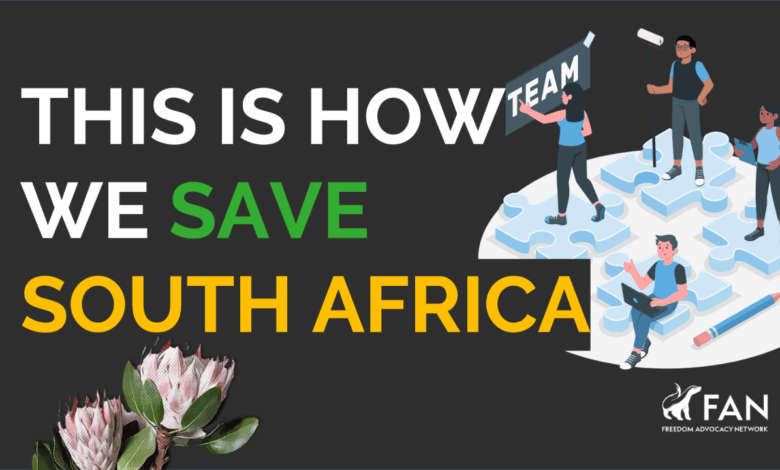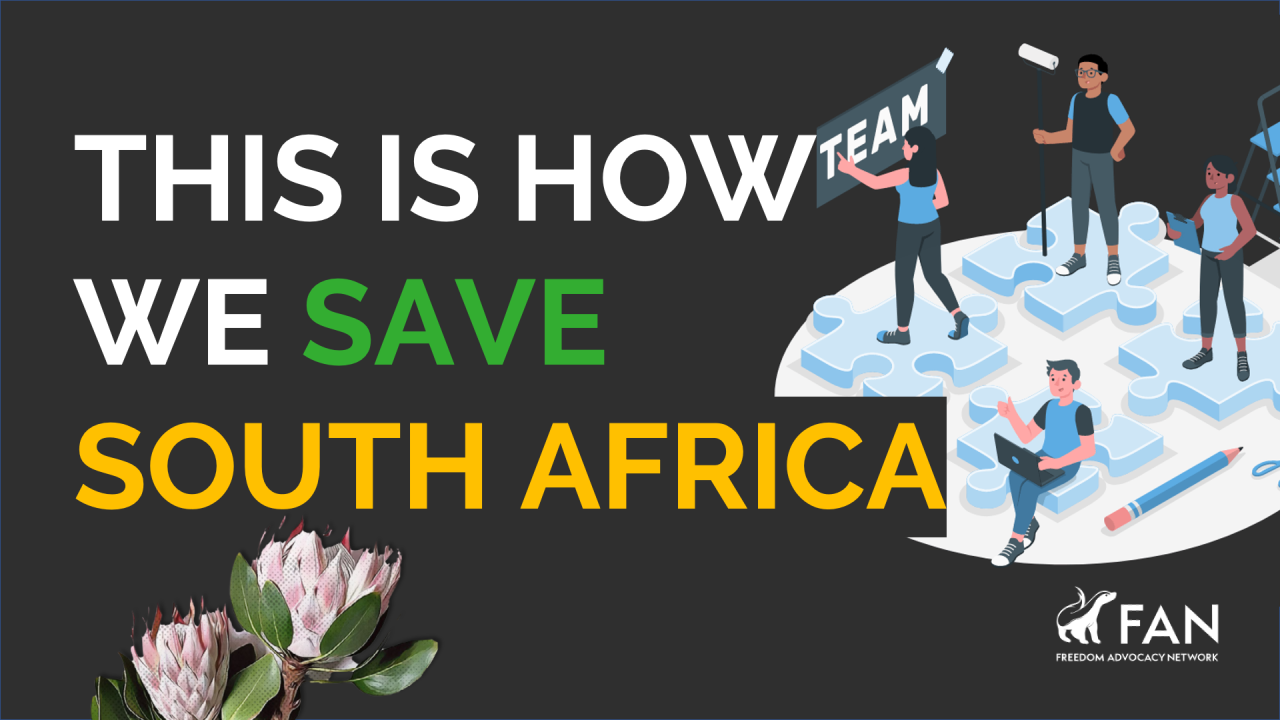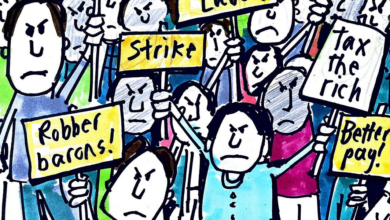
How To Save South Africa
How to save South Africa? It’s a question echoing across the nation, a complex challenge demanding innovative solutions and a unified national effort. This isn’t just about economics; it’s about rebuilding trust, fostering social harmony, and creating a future where every South African has the opportunity to thrive. We’ll delve into the critical areas – from economic revitalization and tackling inequality to improving governance and ensuring environmental sustainability – exploring practical steps towards a brighter future.
This blog post aims to spark conversation and offer potential pathways to progress. It’s not a definitive blueprint, but rather a starting point for a crucial national discussion. We’ll examine successful models from other countries, analyze South Africa’s unique challenges, and propose concrete actions that, when implemented collectively, can lead to meaningful change. Let’s explore how we can collectively build a stronger, more prosperous, and equitable South Africa.
Economic Revitalization
South Africa’s economic recovery hinges on a multifaceted approach addressing systemic issues and fostering sustainable growth. This requires a concerted effort across various sectors, with a strong emphasis on empowering small businesses, tackling corruption, and learning from successful economic models elsewhere.
The Role of SMEs in Economic Growth and Strategies for Support
Small and medium-sized enterprises (SMEs) are the backbone of many successful economies, and South Africa is no exception. They are significant job creators, contributing substantially to GDP and fostering innovation. However, SMEs in South Africa face numerous challenges, including access to finance, skills shortages, and bureaucratic hurdles. Strategies to support their development include simplifying regulatory processes, providing access to affordable credit through government-backed loan schemes and microfinance institutions, and investing in skills development programs tailored to the needs of SME owners and employees.
Furthermore, fostering a culture of entrepreneurship through mentorship programs and incubators can significantly boost SME growth. Targeted support for women-owned and youth-owned SMEs is crucial for addressing inequality and unlocking untapped potential.
Saving South Africa requires a multi-pronged approach, tackling corruption and inequality head-on. Understanding the complexities of shifting political allegiances is crucial, and it’s interesting to consider that, as highlighted in this article, war is not the only reason some Muslims are ditching the Democrats , showing that even seemingly disparate issues can impact broader political landscapes. This reminds us that solutions for South Africa must consider the nuances of various communities and their evolving priorities.
The Impact of Corruption and Anti-Corruption Measures
Corruption significantly undermines South Africa’s economic stability. It diverts resources away from essential services, discourages investment, and erodes public trust. Grand corruption, such as bribery and embezzlement within government contracts, inflates project costs and reduces efficiency. Petty corruption, like bribery of low-level officials, creates additional costs for businesses and citizens. Effective anti-corruption measures require a multi-pronged approach.
This includes strengthening institutions responsible for oversight and enforcement, such as the National Prosecuting Authority and the Auditor-General’s office; promoting transparency and accountability in government procurement; implementing robust whistleblower protection laws; and fostering a culture of ethical conduct through education and awareness campaigns. Independent anti-corruption bodies with strong investigative powers are also essential.
Saving South Africa requires bold, systemic changes. We need to seriously consider how to implement effective, long-term growth strategies, and that’s where understanding the challenges highlighted in this article on Labour’s growth ambitions becomes crucial: labours growth ambitions demand more radicalism on planning. Their approach to planning offers insights into the kind of proactive, potentially transformative policies we need to address South Africa’s complex problems and finally build a brighter future.
Successful Economic Development Models and Their Applicability to South Africa
Several countries have successfully implemented economic development models that could offer valuable lessons for South Africa. For example, the East Asian “tiger economies” (South Korea, Taiwan, Hong Kong, and Singapore) prioritized education, investment in infrastructure, and export-oriented industrialization. These strategies led to rapid economic growth and poverty reduction. While directly replicating these models may not be feasible, South Africa can adapt certain aspects, such as focusing on skills development aligned with market demands and investing in infrastructure projects that improve connectivity and logistics.
Similarly, Rwanda’s post-genocide economic recovery, driven by good governance, strategic investments in infrastructure and technology, and a focus on regional integration, provides a compelling case study. Adapting elements of these models to the South African context, while acknowledging the unique challenges faced by the country, is crucial.
Comparison of Economic Policies in South Africa
| Economic Policy | Strengths | Weaknesses | Impact |
|---|---|---|---|
| Apartheid-era policies | Created a highly developed industrial sector in certain areas. | Systematically disadvantaged the majority of the population, leading to massive inequality and stunted economic growth. | Led to significant economic disparity and ultimately unsustainable growth. |
| Post-apartheid growth, employment, and redistribution (GEAR) policy | Focused on fiscal discipline and macroeconomic stability. | Did not sufficiently address inequality or create enough jobs. | Achieved macroeconomic stability but failed to address underlying social and economic inequalities. |
| National Development Plan (NDP) | Comprehensive long-term vision for economic development and social progress. | Implementation has been slow and faces significant challenges. | Positive long-term vision but requires stronger implementation strategies. |
| Recent focus on radical economic transformation | Aims to address historical inequalities and promote inclusive growth. | Uncertainty and policy inconsistency have discouraged investment. | Potential for positive impact but requires clear, consistent, and well-defined policies. |
Addressing Inequality and Poverty

South Africa grapples with stark income inequality, a legacy of apartheid and compounded by persistent economic challenges. Addressing this disparity is crucial not only for social justice but also for sustainable economic growth. A multi-pronged approach, targeting the root causes and implementing effective solutions, is essential for building a more equitable and prosperous nation.
Root Causes of Income Inequality and Potential Solutions
Income inequality in South Africa stems from a complex interplay of factors. The historical legacy of apartheid created a deeply unequal distribution of land, wealth, and opportunities, leaving a vast majority of the Black population marginalized. This historical disadvantage continues to manifest in limited access to quality education, healthcare, and employment opportunities. Furthermore, a lack of skills development and inadequate infrastructure in many communities perpetuate the cycle of poverty.
Addressing this requires a multifaceted approach. Land reform, though controversial, remains a crucial element in redressing historical injustices and promoting more equitable land ownership. Simultaneously, investment in education and skills development, coupled with targeted job creation initiatives, is vital to empower marginalized communities and create opportunities for upward mobility. Progressive taxation policies, aimed at redistributing wealth more effectively, can also play a role, alongside robust social safety nets to protect vulnerable populations.
Examples of Successful Poverty Reduction Programs and Their Adaptation for South Africa
Several countries have implemented successful poverty reduction programs that offer valuable lessons for South Africa. Brazil’s Bolsa Família program, a conditional cash transfer program, provided financial assistance to poor families contingent on their children attending school and receiving healthcare. This program demonstrably reduced poverty and improved educational outcomes. Similarly, Mexico’s Oportunidades program achieved similar results. Adapting these models to the South African context requires careful consideration of local conditions.
A well-designed program would need to address specific challenges such as high unemployment rates, inadequate infrastructure, and geographical disparities. The program should also include strong monitoring and evaluation mechanisms to ensure effectiveness and accountability. Crucially, community participation in the design and implementation phases is essential to ensure relevance and sustainability.
Impact of Education and Skills Development on Poverty Reduction and a Plan for Improvement
Education and skills development are pivotal in breaking the cycle of poverty. Education empowers individuals with the knowledge and skills necessary to secure better employment opportunities, improving their earning potential and overall quality of life. Skills development programs can equip individuals with the specific skills needed for in-demand jobs, making them more competitive in the labor market. To improve access to quality education in South Africa, a comprehensive plan is needed.
Saving South Africa requires a multifaceted approach, tackling corruption and inequality head-on. A healthy population is crucial for a thriving nation, and that got me thinking – could extending lifespans contribute? I stumbled upon this interesting article exploring whether or not can fasting help you live to 100 , which is a question worth considering as we strive to build a stronger, healthier future for South Africa.
Ultimately, a long and healthy life for its citizens is part of a bigger picture of national prosperity.
This plan should focus on increased investment in infrastructure, teacher training, and curriculum development. Addressing the disparities in access to quality education between different provinces and communities is critical. Furthermore, initiatives aimed at improving early childhood development and providing financial assistance for higher education can significantly increase access to education for disadvantaged communities.
Social Programs to Address Food Insecurity and Unemployment
Addressing food insecurity and unemployment requires a combination of short-term relief measures and long-term sustainable solutions.
- Expanded Social Grants: Increasing the value and reach of existing social grants to provide a safety net for vulnerable families.
- Food Security Programs: Implementing and expanding school feeding programs and community-based food distribution initiatives.
- Job Creation Initiatives: Investing in infrastructure projects and creating employment opportunities through public works programs.
- Skills Development Programs: Providing vocational training and skills development programs to equip individuals with marketable skills.
- Entrepreneurship Support: Providing access to funding, mentorship, and business development services for entrepreneurs.
Improving Governance and Infrastructure: How To Save South Africa

South Africa’s economic potential is significantly hampered by weaknesses in governance and a lack of adequate infrastructure. Addressing these issues is crucial for unlocking sustainable growth and improving the lives of its citizens. Transparent and accountable governance, coupled with robust infrastructure development, forms the bedrock of a thriving nation.Transparent and accountable governance is essential for fostering economic growth and social development.
Corruption diverts resources, discourages investment, and undermines public trust. A strong, independent judiciary, a free press, and active civil society are vital checks and balances against corruption and ensure government accountability. This fosters a predictable and stable environment attractive to both domestic and foreign investors, ultimately leading to increased economic activity and job creation. Without this trust, long-term economic planning and sustainable development become significantly more challenging.
Governance Reforms and Their Effectiveness
Several countries have successfully implemented governance reforms leading to improved economic outcomes. New Zealand, for example, has consistently ranked highly in transparency indices due to its robust anti-corruption measures, independent institutions, and commitment to open government data. This transparency has fostered a business-friendly environment and attracted significant foreign investment. Similarly, Rwanda’s focus on good governance, including its efforts to reduce bureaucratic hurdles and improve the ease of doing business, has contributed to its impressive economic growth.
These examples highlight the positive correlation between effective governance and economic prosperity. Conversely, countries with high levels of corruption often experience slower economic growth and increased inequality.
Infrastructure Development Plan: Energy, Transportation, and Water
A comprehensive infrastructure development plan is needed to address South Africa’s critical infrastructure deficits. This plan should prioritize three key areas:
First, energy requires significant investment in renewable energy sources to diversify the energy mix and reduce reliance on coal. This includes expanding solar, wind, and hydro power generation capacity, coupled with upgrades to the national grid to ensure reliable electricity supply. Investing in smart grids and energy storage technologies will further enhance efficiency and resilience. This will not only improve the reliability of electricity for businesses and households but also create jobs in the renewable energy sector.
Second, transportation infrastructure needs substantial improvement. This includes upgrading existing roads and railways, expanding public transportation systems in urban areas, and investing in port and airport infrastructure. Efficient transportation networks are crucial for moving goods and people, reducing logistical costs for businesses, and improving access to opportunities for citizens. Improved road networks, for example, will facilitate trade and reduce transport time for businesses, while efficient public transport can reduce commuting time and costs for individuals.
Third, water resource management is critical, particularly given South Africa’s vulnerability to drought. This involves investing in water infrastructure, including dams, pipelines, and water treatment plants, to ensure reliable access to clean water for both households and industries. Implementing water-saving technologies and promoting efficient water usage practices are also crucial for long-term sustainability. Improved water management will enhance agricultural productivity, support industrial growth, and improve public health.
Efficient Infrastructure and Economic Productivity
Numerous studies demonstrate a strong positive correlation between efficient infrastructure and economic productivity. Improved infrastructure reduces transportation costs, increases access to markets, and enhances overall efficiency. For example, a World Bank study found that a 1% increase in infrastructure investment can lead to a 0.3% increase in GDP growth. Similarly, research shows that improved transportation infrastructure can significantly reduce the cost of doing business, making countries more competitive in the global market.
Efficient water infrastructure ensures reliable water supply for industries, reducing production disruptions and increasing output. These examples highlight the crucial role that infrastructure plays in driving economic growth and improving living standards.
Healthcare and Education Reform
South Africa faces a dual challenge in healthcare and education: providing equitable access to quality services and fostering a skilled workforce capable of driving economic growth. Addressing these issues requires a multifaceted approach focusing on resource allocation, infrastructure development, and systemic reforms. Significant investment and strategic planning are crucial for achieving meaningful improvements in both sectors.
Challenges and Solutions in the South African Healthcare System, How to save south africa
The South African healthcare system grapples with significant challenges, including a shortage of healthcare professionals, particularly in rural areas, and unequal access to quality care based on socioeconomic status and geographic location. Furthermore, the system struggles with inadequate infrastructure, a lack of essential medicines and equipment, and high rates of infectious diseases. Solutions involve strategic workforce planning, including training and retaining healthcare professionals through competitive salaries and improved working conditions.
Investment in infrastructure development, focusing on rural and underserved communities, is crucial. Strengthening supply chains to ensure consistent availability of essential medicines and equipment is equally important. Public health campaigns addressing preventative care and tackling infectious diseases are also vital. Finally, implementing effective monitoring and evaluation systems to track progress and identify areas needing improvement is essential.
Investing in Education and Skills Development
Investing in education and skills development is paramount for improving South Africa’s human capital. A well-educated and skilled workforce is essential for driving economic growth, innovation, and social progress. This requires a comprehensive approach encompassing early childhood development, quality primary and secondary education, and access to affordable tertiary education and skills training programs aligned with the needs of the labor market.
Furthermore, ongoing professional development opportunities must be provided to ensure that the workforce possesses the necessary skills to adapt to the evolving demands of the economy. This includes vocational training and apprenticeships to address skills shortages in specific sectors.
Successful Healthcare and Education Reforms in Other Countries
Several countries have implemented successful healthcare and education reforms. For example, Brazil’s “Mais Médicos” program addressed physician shortages in underserved areas by recruiting foreign doctors and providing them with training and support. This program demonstrated that strategic workforce planning and targeted recruitment can significantly improve healthcare access. In contrast, Finland’s education system, known for its high-quality and equitable outcomes, emphasizes early childhood education, teacher training, and a focus on individualized learning.
Finland’s success highlights the importance of investing in teachers, providing them with adequate resources and support, and creating a supportive learning environment. These examples underscore the need for comprehensive, long-term strategies that address multiple aspects of healthcare and education systems.
A Plan for Improving the Quality of Education in South Africa
Improving the quality of education in South Africa requires a multi-pronged approach. First, early childhood development programs must be expanded to ensure that all children have access to quality early learning experiences. Second, teacher training and professional development must be prioritized to improve the quality of instruction and ensure that teachers have the skills and support they need to effectively teach diverse learners.
Third, the curriculum must be reviewed and updated to ensure that it is relevant, engaging, and aligned with the needs of the 21st-century economy. Fourth, schools need to be adequately resourced with essential learning materials, technology, and infrastructure. Fifth, assessment methods should be reformed to move away from rote learning and towards more holistic approaches that assess critical thinking, problem-solving, and creativity.
Finally, partnerships between schools, communities, and businesses are crucial to ensure that education is relevant to the needs of the local economy and the students themselves. This holistic approach will create a more equitable and effective education system.
Saving South Africa is a marathon, not a sprint, requiring sustained commitment and collaborative action. While the challenges are immense, the potential for positive transformation is equally vast. By addressing the interconnected issues of economic inequality, governance, social cohesion, and environmental sustainability, we can pave the way for a future where all South Africans can reach their full potential.
This isn’t just about fixing problems; it’s about building a nation we can all be proud of, a nation defined by its resilience, its unity, and its unwavering hope for a better tomorrow. Let’s work together to make that tomorrow a reality.




